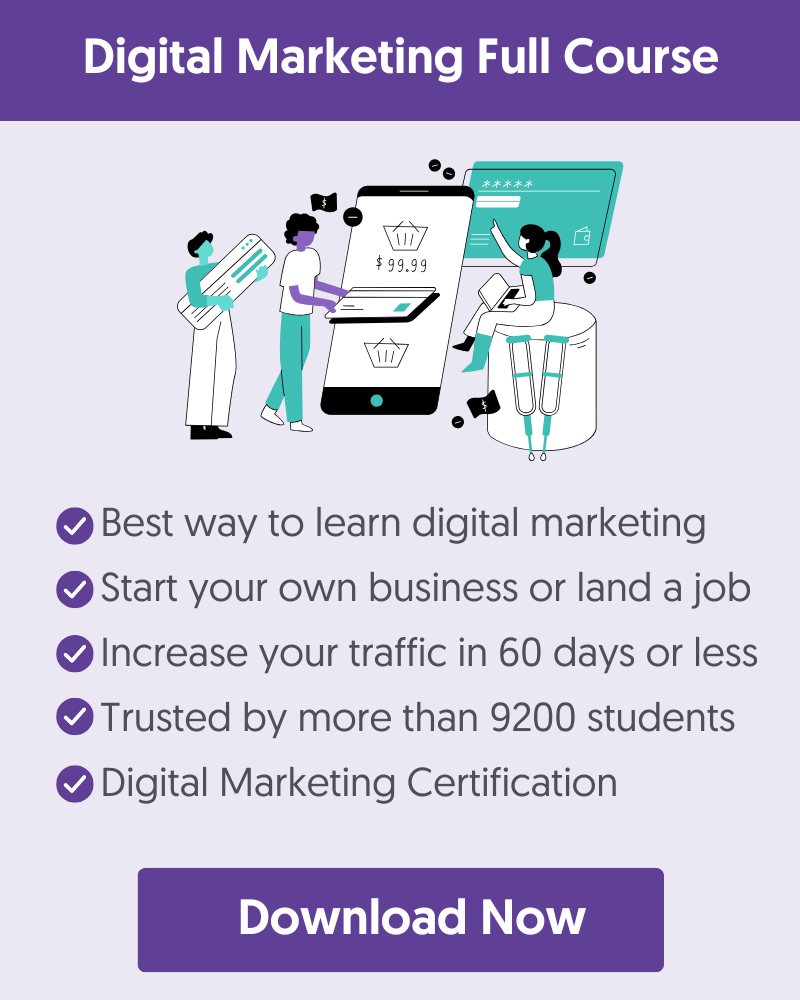Writing for SEO is an art. The job of an SEO writer is to write content for search engines and users. To do that successfully, you must know how to apply basic SEO content principles in practice.
In this guide, you’ll learn everything you need about SEO writing. I will explain what SEO writing is and give you 12 SEO content writing tips to ensure that each content you write is search-engine friendly.
What Is SEO Writing?
SEO writing is the process of writing content to rank high in search engines like Google, for related keywords. This is done by doing keyword research and writing SEO-optimized and helpful content relevant to the user's search intent.
SEO writing is also known as SEO copywriting or search engine optimization writing.
Why Is SEO Writing Important?
SEO writing is important because if you want your content to get traffic from search engines, it needs to appear in the top positions of the SERPs. According to studies, the majority of search engine traffic goes to the top 5 positions.
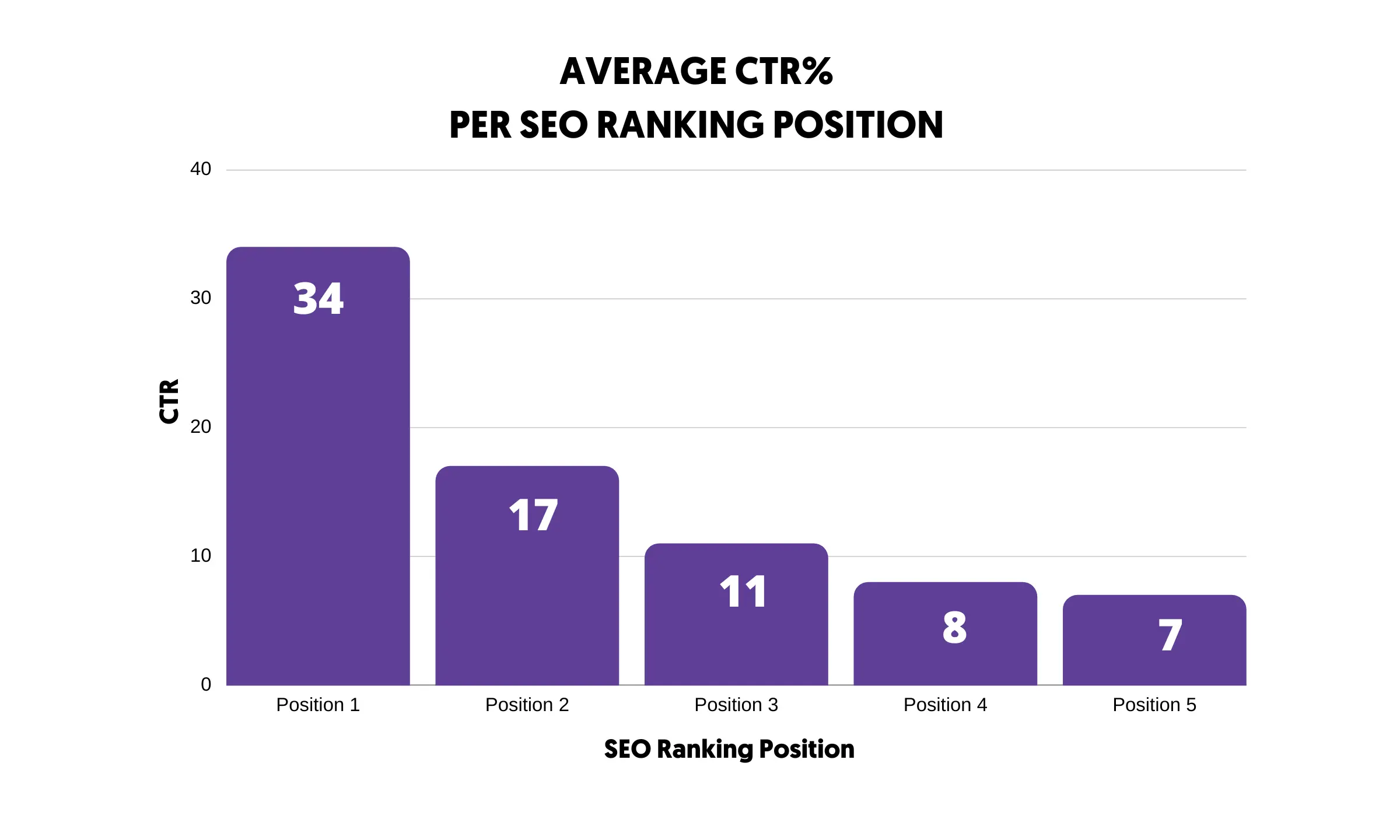
Another reason is growth. If you consistently write content that keeps users and search engines happy, it will have a positive effect on your Google trust and you'll be able to rank for more keywords.
Over time, you'll experience a steady growth of organic traffic with numerous other benefits for your business.
How To Write SEO Content
Follow these rules to start creating optimized SEO content.
- Find Your Primary And Secondary Keywords
- Craft Your Page Title And Meta Description
- Create An SEO Friendly URL
- Satisfy Search Intent
- Create Helpful, Unique Content
- Use Keywords In Your Content
- Create Meaningful Subheadings
- Add Internal Links With Relevant Anchor Text
- Optimize Content For E-E-A-T
- Optimize Content For Featured Snippets
- Add And Optimize Images
- Make Your Content Easy To Read On Mobiles
1. Find Your Primary And Secondary Keywords
The first step before writing new content is to decide which keywords to target.
This process is known as keyword research, and it's very important for a simple reason. You need to write content around topics that people search for and keyword research will tell you that.
When you do your keyword research, the outcome will be a set of SEO keywords both head (or primary keywords) and long tail keywords that people type in search engines.
The easiest way to do this is to:
- Go to Google and search for your chosen topic (general).
- Visit the top 5 pages and analyze the type of content they provide.
- Take each URL and, using Semrush or other tools (Ahrefs, Ubersuggest, etc), find out for which keywords those pages are ranking and the traffic they get.
- Then, depending on the results, decide which main keywords you will target in your content.
- Take those keywords again and, using a tool, find out the associated long-tail keywords and related keywords.
Example
Here is an example of how I followed the above steps when writing this post:
I did a general search on Google using “write for SEO”.
I analyzed the first results using Semrush and found out that the keyword that has a high volume for my chosen topic is “SEO writing.”
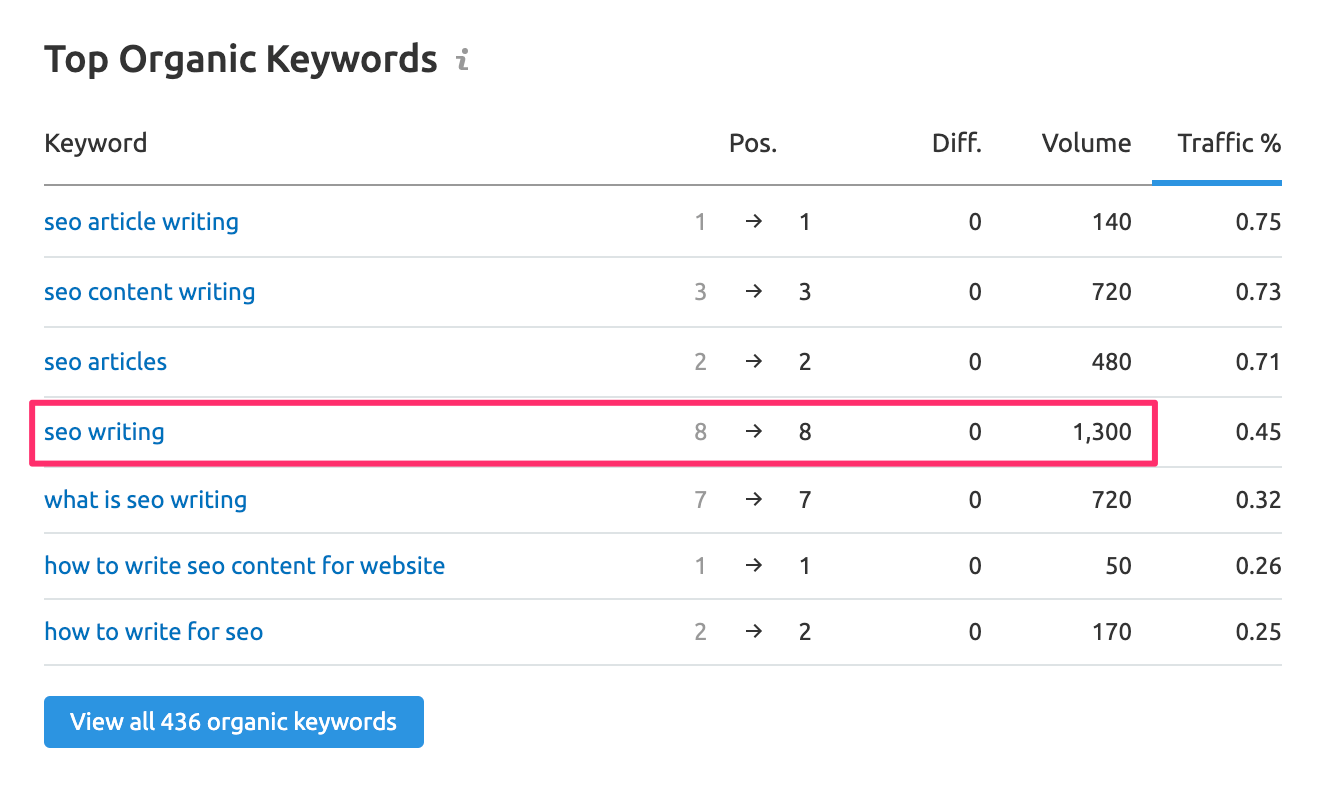
I then used the Keyword Magic tool (utilizing the advanced filters feature) of SEMRUSH to find other related long-tail keywords.
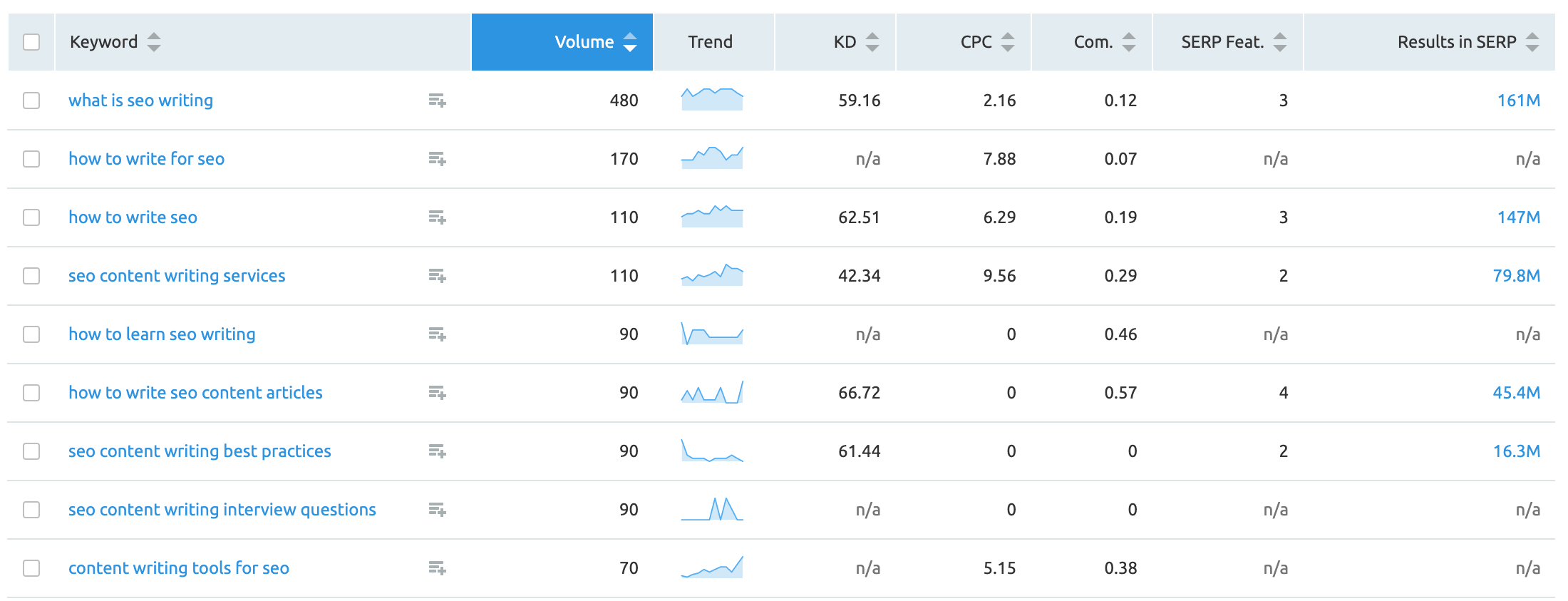
If you take a closer look at the content, you’ll see that these keywords are used in different places throughout the article.
By following this process every time you write new content, you help search engines understand your content better, and if your content satisfies what users want, this will eventually translate to higher rankings, social media shares, and more incoming links.
2. Craft Your Page Title And Meta Description
The next step is to start thinking about your page title. Choosing a good page title is critical for the success of your content, so allocate the necessary time to come up with a title that:
- Includes your target keyword
- It’s unique for your website
- It’s interesting for users to click
- It’s around 60 characters
- It’s not the same as the existing titles on the first page of Google.
Don’t omit any of the steps, especially the last one. Before deciding on your title, go to Google, type your target keyword, and analyze the first 10 titles.
Your goal is to create a title that is unique. Otherwise, you limit your chances of getting a top-10 position. Google rarely shows pages with the same title in the first 10 results.
Do the same when crafting your meta description. Make it unique, and try to describe your content in 160 characters or less. Include keywords so that users can know if the content matches their intent.
For example, look at the title and meta description below and notice how the keyword 'learn digital marketing' is used naturally in both.
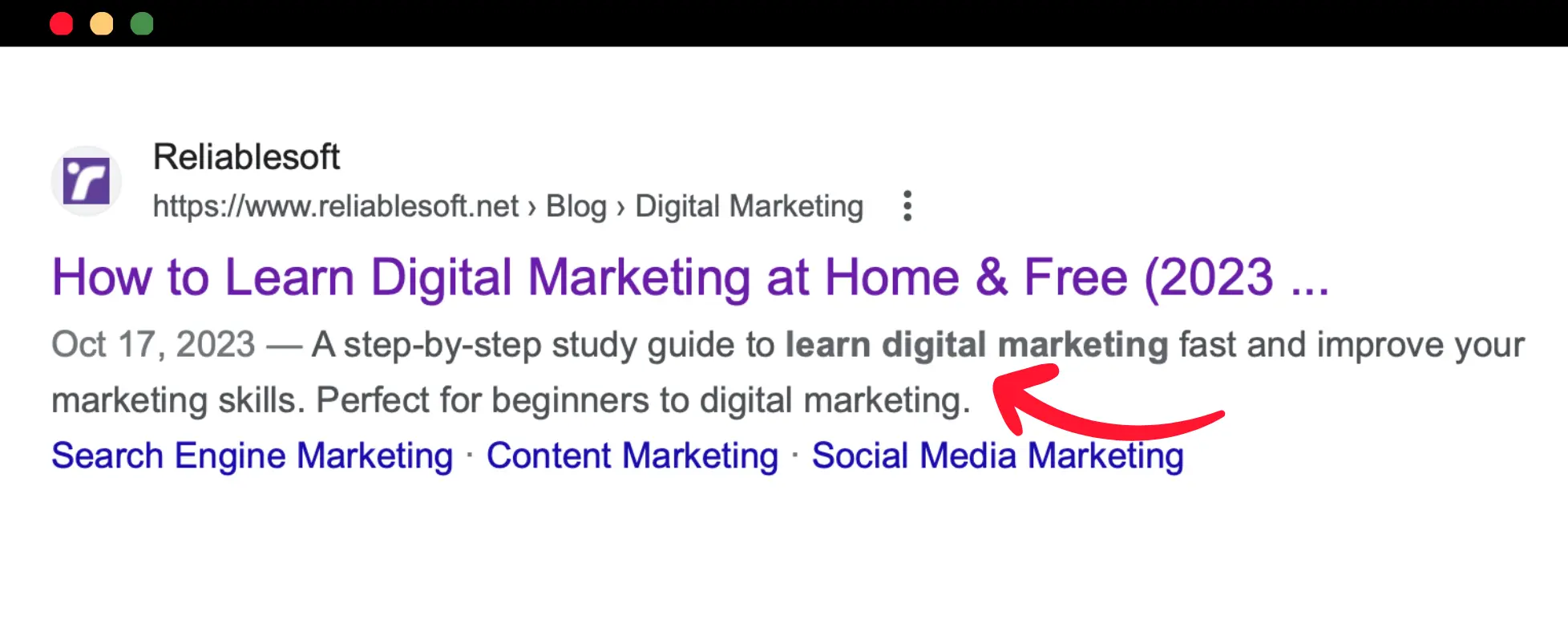
3. Create An SEO Friendly URL
The next step is very easy to implement. When creating the permalink of your post, ensure it includes your target keywords and eliminates any unnecessary words.
Look, for example, at the URL of this post. By default, it was the same as the page title, i.e.
https://www.reliablesoft.net/seo-writing-how-to-write-for-seo-12-easy-tips/
But I have shortened it down to:
https://www.reliablesoft.net/seo-writing
Aim for having exact match URLs where possible. Read our guide on SEO-Friendly URLs for more details.
4. Satify Search Intent
After finding your target keywords, the next step before writing the content is to examine what kind of content users like to consume for the particular keywords. In other words, you need to find the search intent behind each keyword.
To do this successfully, search for your target keywords on Google and examine the top-ranking pages. What kind of content is ranking in the top positions? Are they short-form articles, long-form articles, or listicles? What is the average content length? How are the pages structured?
Also, look at the 'People Also Ask' section, which shows users' common questions about a particular topic.
For example, let's say you're writing a post on "blogging tips".
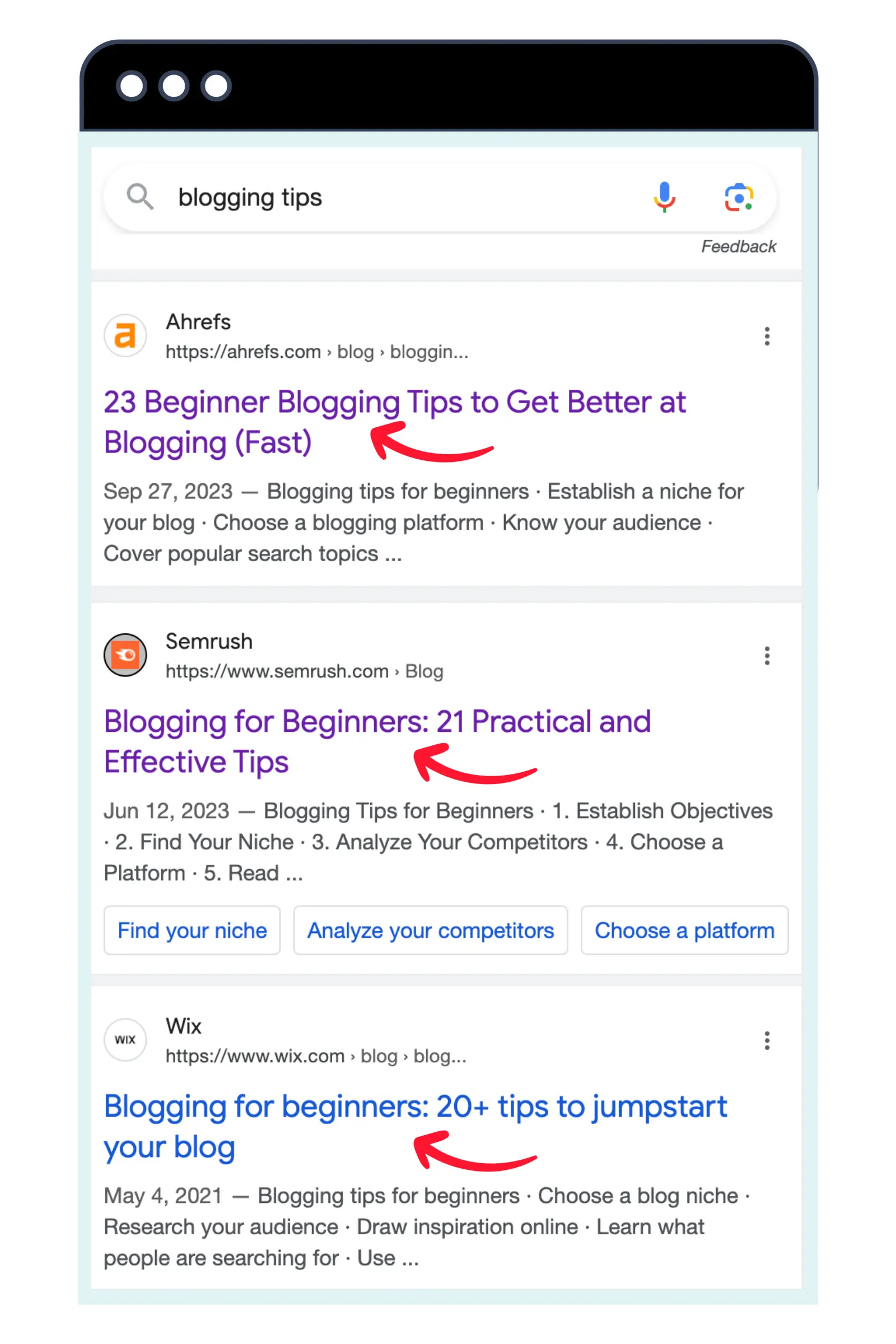
If you perform a search on Google, you can easily make these assumptions:
- Most articles have a list of tips, so the appropriate format for this keyword is listicles.
- For each tip, they give a summary and links to learn more.
- The average article length is 3000 words.
- Top-ranking articles have many custom-made visuals.
If you follow the above guidelines and provide content that is unique and useful, you'll have more chances of achieving a high ranking.
Another example. If you are writing an article about ‘SEO tools,’ you will notice that almost all results are about lists with ‘Free Tools.’
This means that Google has found out that when users search for tools, although they don’t include the word ‘Free’, they intend to browse lists of Free tools.
This also means that if you target this keyword, you must adjust your title and content accordingly. Otherwise, you minimize your chances of rankings for that term.
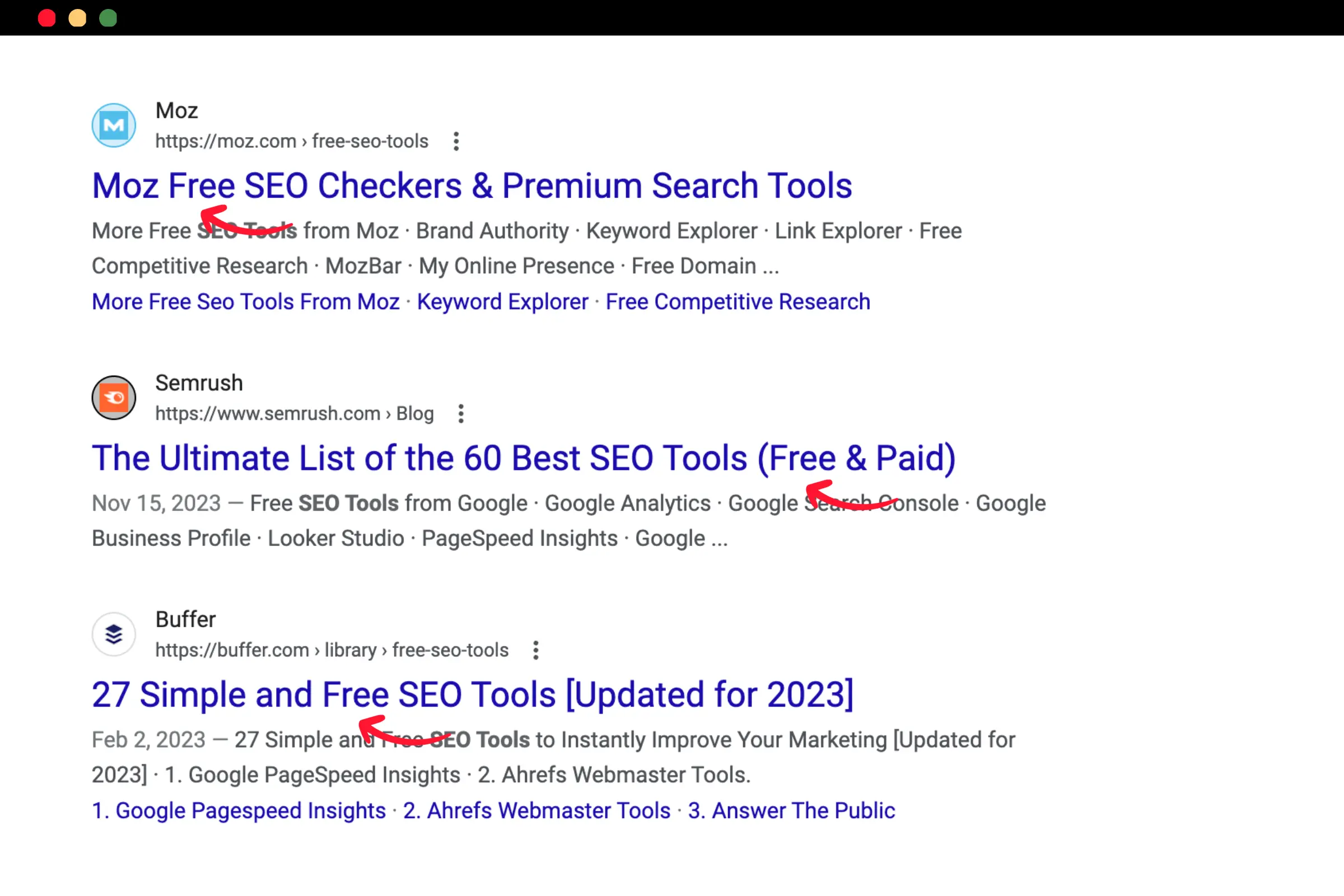
Pro Tip: Make sure you research on both desktop and mobile, as the results are presented differently.
5. Create Helpful, Unique Content
Now it’s time to get your hands dirty and get into content writing.
You already know what your competitors have published, you have your title, and you know which keywords to include in your content. What else do you need?
You need content that has the following characteristics:
- People-first - content produced to provide value to people and not search engines.
- Original - content that is not a copy of existing content.
- Unbiased - content that is not biased but presents both sides of a story.
- Complete - content that provides a comprehensive description of a topic.
- Better - content doesn't have to be perfect, but it has to be better than what is already published.
Follow the checklist below, every time you start creating content.

What is the ideal length of content?
I've mentioned above that you must make your content comprehensive enough so that users can get accurate and in-depth information about the topic.
Despite what you might have read, there is no magic number when it comes to word length.
It all depends on the topic and keywords. For some topics, you might need to write articles that are over 2000 words. For other topics, you can provide a comprehensive answer in 800 words.
Content length alone is NOT a ranking factor. What matters is the quality of the content and how well it can satisfy the user's real intent.
To avoid any confusion, several studies have shown that the ideal article length for SEO is around 1800 words, and this is true for many cases.
Longer articles allow you to use more keywords (without keyword stuffing), and they tend to do better in social media.
But, this is a general guideline and not applicable to all cases. My recommendation is to find the average length of the first 10 results and try to provide a bit more content but better than what has already been published.
There is no reason to write a 3000-word article if you can have the same result as a 1500-word article.
6. Use Keywords In Your Content
Here is a nice tip that most SEO writers fail to follow. Once you are done with the first draft, you need to go back and revisit your post introduction.
Your goal is to make sure that your target keyword is included in your opening paragraph.
The reason is that Google always considers that content that is above the fold and high on a page is more important than content found down the page.
Adding your keywords in the first paragraph gives Google a big clue as to which keywords to associate this page with. It’s also good for the users since you can help them understand that they are on the right page.
With the introduction of machine learning to Google search algorithms (known as RankBrain), Google is trying to truly understand what the searcher wants by using natural language processing.

This means that for a given keyword, Google will look for the deeper meaning of the query and not just for exact match keywords.
For you as an SEO copywriter, it means that you need to add related keywords in your content to help them during this process.
Related keywords are keywords that have the same or similar meaning. You can find these keywords using tools like Semrush. Here is a screenshot of the related keywords for “SEO writing”.

So, you need to return to your copy and enrich it with these keywords naturally. You may have to rephrase some of your sentences, but it’s a step that can improve the relevance of your content.
7. Create Meaningful Subheadings
One of the characteristics of SEO-friendly content is that it’s easy to read by both search engines and users, and headings help in that direction.
Don’t be surprised but the majority of users won’t read your content, they will scan through it. Having meaningful headings helps them find the part they want faster.
Search engines follow the same pattern, especially for long-form content. They scan the page and look for certain elements to understand how it is structured and what topics or keywords the content covers.
To make their job easier, you can use predefined heading tags in your HTML, like the H1 tag, h2 tag, and h3.

Usually, a page has only one H1 tag, which is used for the title, and then the rest of the content has H2 for the main headings and H3 for the sub-headings.
To further improve the SEO friendliness of your copy, try to use some of your long-tail keywords in the headings. Take a closer look at the headings of this article and notice how I have added long-tail keywords in my headings.
8. Add Internal Links With Relevant Anchor Text
One of the SEO principles most SEO content writers tend to forget is internal linking. An internal link is a link that points to a page on the same website.
Why is it important?
When you publish a new page, it has to match your site’s topics. This improves relevancy and rankings. One of the ways to ‘tell’ Google that your content is relevant to the rest of the site, is to use internal links.
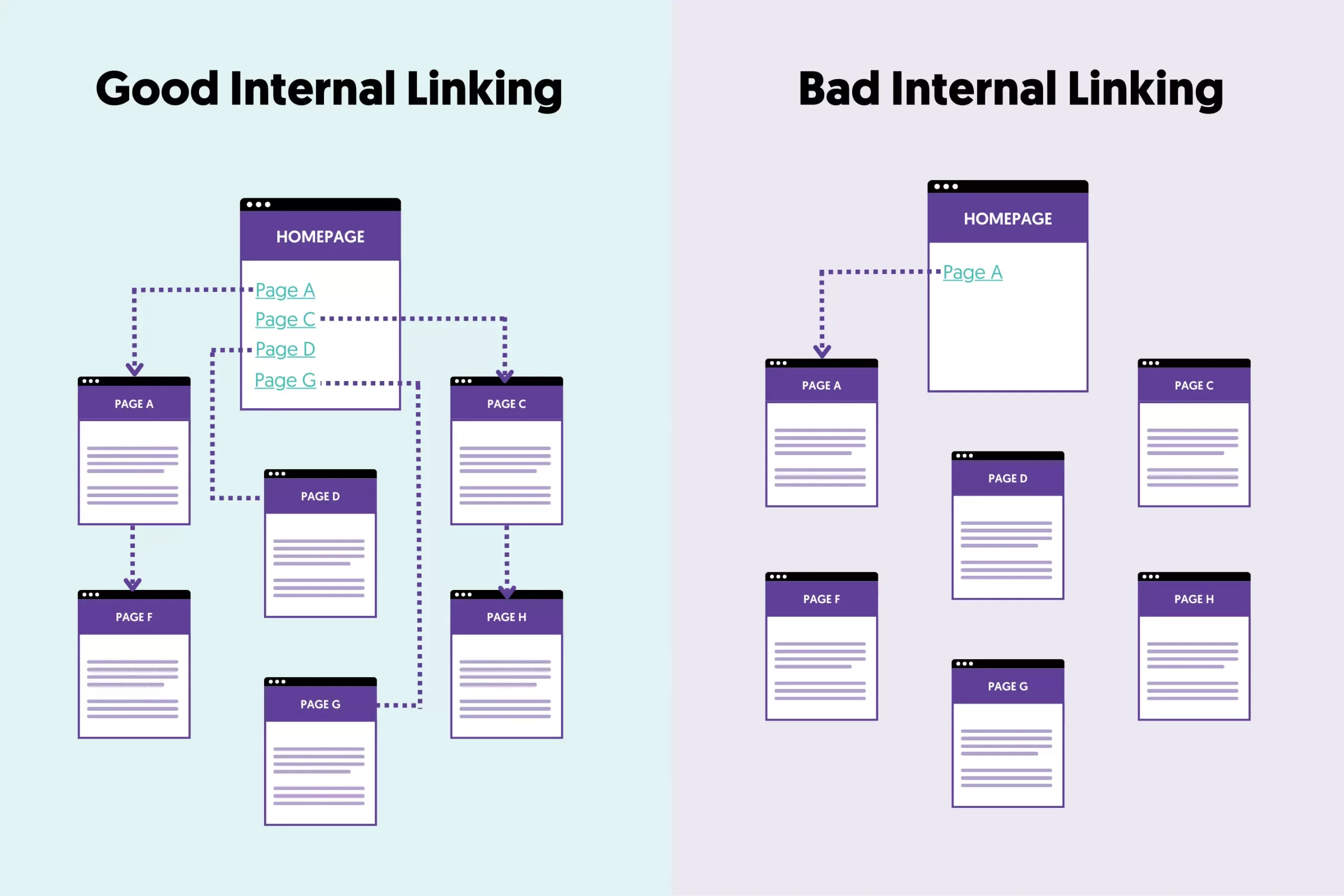
Although internal links are not as powerful as SEO backlinks, they are still used by Google to understand what the linked page is about, especially if the right anchor text is used in the link.
They also help users learn more about a topic (look at this article again and notice how I have used internal links to give users a way to find out more information about a topic).
Last but not least, internal links are followed by search engine crawlers, and this leads to better crawling and indexing of more site pages.
9. Optimize Content For E-E-A-T
A lot of content is published on the Internet, and to protect the quality of their search results, Google algorithms can detect which pages demonstrate Experience, Expertise, Authoritativeness, and Trustworthiness on a given topic.
In the SEO world, this is known as E-E-A-T and is a critical factor of SEO content and an indicator of content Quality.
Here is the relevant quote from Google's guidelines on content quality.

How can you improve your SEO copy for E-E-A-T?
Follow these simple guidelines:
- Every page should have the author's name and bio published (see how I use this on all my posts).
- A page should have outgoing links to trusted sources.
- A page and website, in general, should have incoming links from other trusted and related websites.
As an SEO copywriter, you cannot control the last guideline (incoming links) since this has to do more with the content promotion part, but you can control the first two.
So, revisit your content again and ensure that it links to other trusted websites and that the author bio is clearly shown on all pages.
10. Optimize Content For Featured Snippets
Another important tip for making your content more visible to search engines is optimizing for featured snippets.
A featured snippet appears on position 'zero' of the organic results and has a higher CTR compared to normal listings. Here is an example:
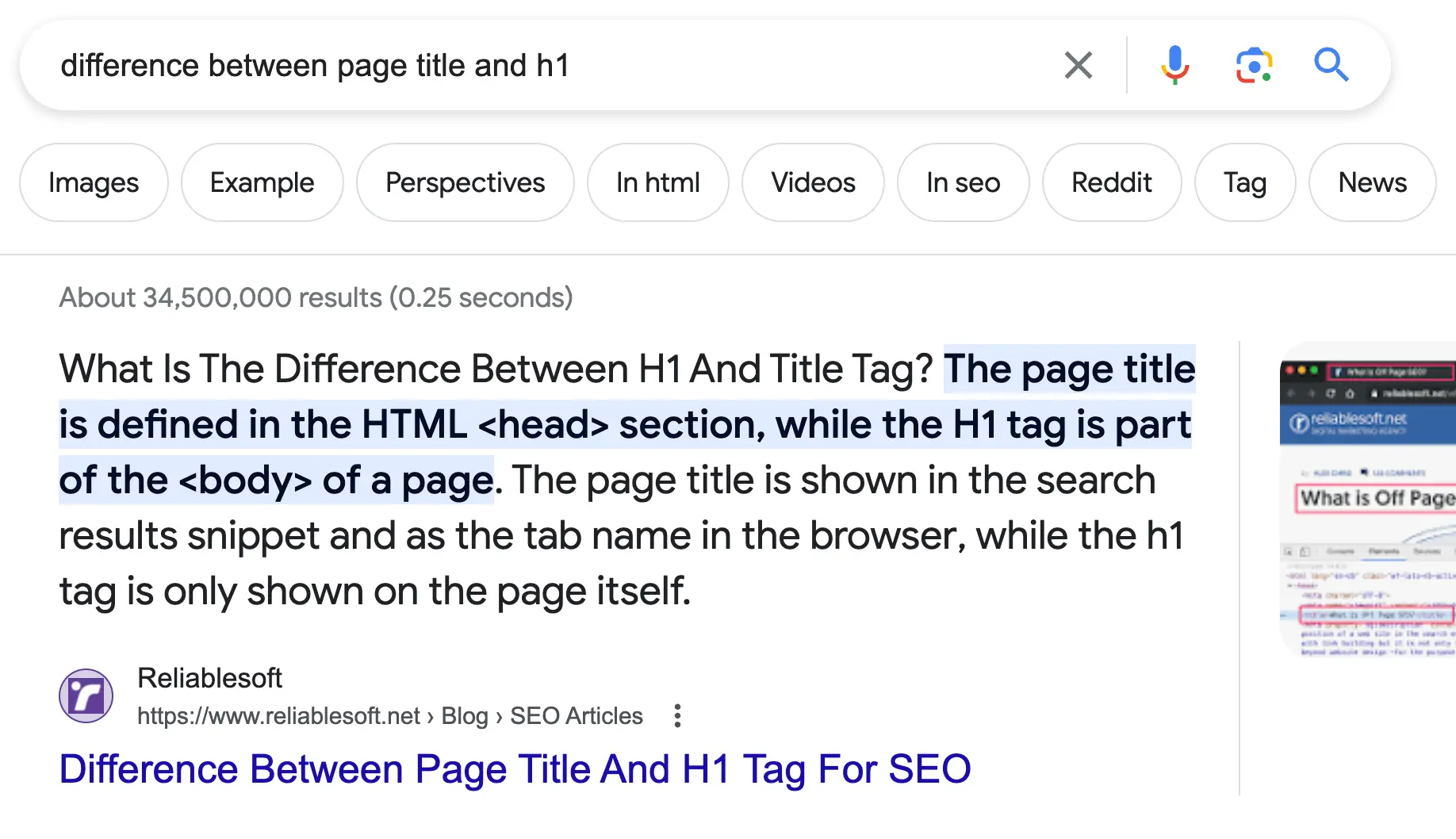
For every piece of content you publish, you should analyze the SERPs to find what kind of featured snippets Google shows for your target keywords and optimize your content accordingly. The most common types are paragraphs, lists, tables, and videos.
11. Add And Optimize Images
Before you hit the publish button, ensure your content includes optimized images.
Adding images to your content makes it more interesting and easier to read. While this is not directly related to SEO writing, it can help in many ways:
- Users are more likely to share content with high-quality images in their social media networks than content with no images.
- You can use the image alt text to give search engines more clues about your content.
- When you properly optimize your images, you have more chances of appearing in Google image search for your target (or related) keywords.
12. Make Your Content Easy To Read On Mobiles
When writing content, ensure it is optimized for reading on mobile devices. This means:
- Use a font that is big enough.
- Breaking the text into short paragraphs.
- Use lists where appropriate to make the information more digestible.
- Use responsive images that adapt to different screen sizes.
- Ensure that the main content is not confused with ads.
- The page loads fast and has no annoying popups.
Key Learnings
Anyone can learn to write for SEO. It’s a skill that can be easily mastered through practice and by following some basic SEO principles.
If you work as a freelancer, you can apply for many SEO writing jobs. If you’re doing SEO for your website, learning how to write content for SEO will make your content get found on Google.
What you should not forget is always to put the user first. Your primary concern is providing content users want to read and then optimizing it for SEO.
This is why I have separated the process into several steps that involve writing the content naturally and then revising it for SEO.
